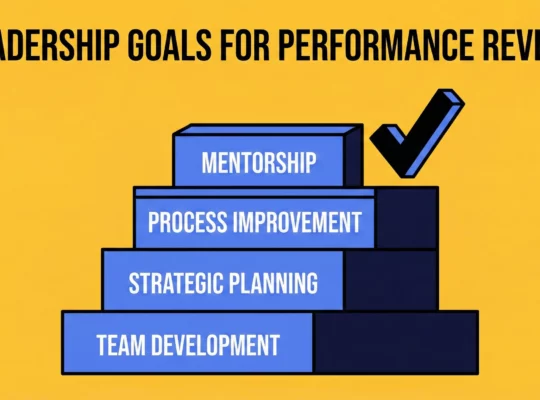After the selection of the candidate, there is one final step to complete the recruitment process. This step is the integration of the new employee. This phase, which is equally important for both the employee and the employer, is often overlooked by many companies. Here, you will find the challenges of integrating an employee into a company.
What are the challenges of integration for an employee?
Integration, also called onboarding, presents many challenges for an employee who has just been newly recruited by a company. It is, in fact, a process that is prepared well before the new employee’s start date. Indeed, for the employees to fully dedicate themselves to the company, they must find ways to integrate. This is precisely what represents challenges for them.
The company’s policy
One of the first challenges the employee will have to face is related to the company’s policy. They must grasp a significant portion of the principles, standards, workings, and behaviors that their new environment imposes on them. With a detailed understanding of the company’s policy that has just hired them, the new employee can better handle their responsibilities.
Furthermore, to gain a deeper understanding of the challenges of integrating an employee into a company, it is possible to consult a trusted employee review platform. As the name suggests, this virtual space or website allows employees to freely express their opinions on topics related to their workplace. It is therefore possible to receive advice from employees on methods to easily integrate.
The company’s history and culture
Another challenge that the employee will face after their selection is mastering the company’s history. This will enable them to feel engaged and motivated to contribute to the development of a project or the entire organization. Indeed, a company’s history showcases its beginnings, objectives, and the individuals who have contributed to its growth.
As for company culture, it represents a crucial aspect of integration as it unites employees around common values. More specifically, an employee feels more comfortable and is capable of performing their duties effectively when they identify with the vision, qualities, or brand image of the company.
The locations and equipment of the company
The equipment and locations of the company are also factors in an employee’s integration into a company. This is simply because a healthy environment that the employee is accustomed to makes them more productive and creative. Adapting to the new environment should therefore happen quickly to avoid generating a desire to resign shortly after recruitment.
For the integration to be positive for the employee, they must be confident that they are working in a workplace that ensures their safety and does not have a negative impact on their health. Furthermore, quickly becoming familiar with furniture, equipment, or devices contributes to better employee integration within a company.
The social environment within the company
To fully unleash one’s potential, it is undoubtedly necessary to be on good terms with all the personnel in one’s workplace. Therefore, the employee must demonstrate the ability to work in a team and get along with others. All of this represents challenges in the integration of the new collaborator into their new company.
Poor relations among employees in the same team have numerous consequences. The newcomer will not feel comfortable and may request to leave their position. This is considered a negative professional experience for the employee. In summary, internal communication within a company and employer branding are important aspects for a new employee in a company.
What are the challenges of integration for a company?
The objective of a company following a recruitment process is to keep a new employee as part of its workforce for as long as possible. Indeed, the success of the integration significantly affects the employee’s performance and, consequently, has an impact on the company’s development. Therefore, there are multiple challenges to integrating an employee into a company.
Welcoming a new employee
The first challenge concerns welcoming and supporting the newcomer. The new employee should feel accepted from the very beginning in the new organization they have just joined. For this purpose, the company should provide a warm and friendly welcome. It is possible to establish, for example, an onboarding program that includes organizing a company event, providing training, or arranging meetings with staff members.
It should be noted that, for greater effectiveness on the part of the organization, a structured and personalized integration process should be put in place. The needs and expectations of each new employee may differ. The challenge for the company here is to be able to identify these needs and expectations in order to ensure the new employee’s successful transition into their new professional environment.
Accompanying and Training the New Employee
Other challenges that a company must address for the successful integration of an employee involve providing ongoing support for the newcomer. The new employee should be informed about the expected behaviors within the organization, a role typically undertaken by the leaders or managers of the company. Furthermore, assigning a mentor to the employee during their initial days can be beneficial. It is worth noting that effective follow-up helps to address concerns and prevent abrupt departures.
The ongoing training of employees also represents a challenge that companies must address. It is essential to equip the new employee with the skills they need to perform their role effectively within the team. This can be achieved through interactions with technical staff, training sessions, and updates on internal operations. Regardless of the method used, effective training will bolster the employee’s confidence and ensure their personal development.
Stress reduction
Chronic stress impacts the quality of work and, consequently, affects the economy and the company’s image. It is generally caused by an excessive workload, a lack of organization, or difficulty in adapting to the work environment. The social climate within the company is also among the triggering factors for chronic stress. In other words, difficult relationships among colleagues or with management can destabilize and make it challenging for an employee to integrate into an organization.
To prevent chronic stress, the employer should implement collective prevention measures. For new employees, the company must meet the challenge of providing them with a healthy environment in which work objectives and hours are clearly defined. Programs focused on stress management at work can be offered to the newcomer if necessary.
The company’s image
The company’s image is undoubtedly the most important issue for businesses during an integration process. It is important to clarify that a failed integration process not only wastes time and money for the entire company but also reflects poorly on the company’s image when it struggles to integrate new employees. Hence, the need to succeed in the integration of a new collaborator.
To facilitate the integration of the new employee and maintain a positive image externally, the company must take certain measures. For example, it is essential to announce the arrival of the new employee internally, prepare an appropriate welcome, and organize a tailored integration program.
How to assess the integration of your new personnel?
To achieve the goal of successfully integrating a new collaborator, the business leader should conduct regular assessments with the person involved. They are in the best position to discuss any challenges and issues the new employee is facing within the company. This small evaluation helps prevent premature departure and allows for improvements to the integration process in the case of future recruitment.
Furthermore, it is possible to entrust the evaluation of integration to professionals such as in-house recruiters. Given the importance of integrating new personnel, a recruitment specialist will be better equipped to guide the integration process, ensuring that it is beneficial for both the new employee and the entire company.





